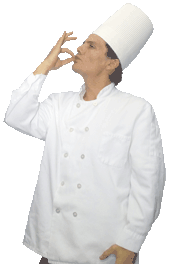At WiseGEEK, we're committed to delivering accurate, trustworthy information. Our expert-authored content is rigorously fact-checked and sourced from credible authorities. Discover how we uphold the highest standards in providing you with reliable knowledge.
What Are the Best Tips for Canning Chicken Soup?
When canning chicken soup, it’s important to use a pressure canning system. The United States Department of Agriculture recommends pressure canning as the only safe method of canning low-acid foods like chicken soup. When canning chicken soup, do not add flour products, dairy products, or thickeners to the soup prior to canning.
The biggest threat to successful canning is bacteria. While other pathogens can be killed at 212 degrees Fahrenheit (100 degrees Celsius), foods must be heated to 240 degrees Fahrenheit (116 degrees Celsius). Low-acid foods like chicken soup have a pH level of 4.6 or greater and are especially conducive to bacteria growth. When canning chicken soup, it’s imperative that a pressure canner be used to heat the soup enough to kill bacteria like Clostridium botulinim, the bacteria responsible for producing botulism.

It’s important to use undamaged Mason jars with bands and sealing lids when canning chicken soup. These are the safest jars to use because they have been designed to withstand high temperatures and repeated use. While the jars and bands may be re-used, the lids must be brand new each time for maximum safety. Never use empty food jars to can chicken soup because they are designed only for single use and will not withstand the high temperatures of a pressure canner.
Mason jars should be washed thoroughly in hot water before use. When canning chicken soup, fill the jars with the soup only. No pasta, noodles, or rice should be added to the soup prior to canning. Milk and cream are also unsuitable additions for chicken soup prior to canning.
Jars should be filled half full with solids and the rest of the way with liquid, allowing as close to 1 inch (about 2.5 cm) of headspace as possible. Headspace is the space between the surface of the food and the lid of the jar. Either too much or too little headspace can result in an improperly canned product. Air bubbles must be removed completely by tapping on the jar lightly.
The pressure canner should be operated according to the manufacturer’s instructions in relation to the jar size. Alternate directions should be consulted for canning at altitudes above 1,000 feet (305 m). All instructions and recipes for canning chicken soup should be dated after 1990 because earlier guidelines may not reflect all that is currently known about safe food handling guidelines.
After canning chicken soup, the jars should be examined to make sure they are properly sealed. Canned chicken soup may be stored for a year or longer. When opening jars, check for off smells, sliminess, and discoloration and discard if there are any signs of spoilage.
AS FEATURED ON:
AS FEATURED ON:










Discuss this Article
Post your comments